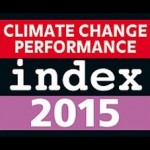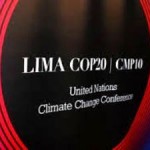 Fifty of the 500 largest listed companies in the world are responsible for nearly three quarters of the group’s 3.6 billion metric tons of greenhouse gas (GHG) emissions, so finds the CDP Global 500 Climate Change Report 2013 released today. The carbon emitted by these 50 highest emitting companies, which primarily operate in the energy, materials and utilities sectors, has risen by 1.65% to 2.54 billion metric tons over the past four years. This increase is equivalent to adding more than 8.5 million pickup trucks to the streets, or the supply of electricity to 6 million homes for a year[1].
Fifty of the 500 largest listed companies in the world are responsible for nearly three quarters of the group’s 3.6 billion metric tons of greenhouse gas (GHG) emissions, so finds the CDP Global 500 Climate Change Report 2013 released today. The carbon emitted by these 50 highest emitting companies, which primarily operate in the energy, materials and utilities sectors, has risen by 1.65% to 2.54 billion metric tons over the past four years. This increase is equivalent to adding more than 8.5 million pickup trucks to the streets, or the supply of electricity to 6 million homes for a year[1].
The report is co-written by CDP, formerly known as the Carbon Disclosure Project, and professional services firm PwC. It provides the most authoritative evaluation of corporate progress on climate change. The analysis is based on the climate and energy data of 389[2] companies listed on the FTSE Global 500 Equity Index, collected by CDP at the request of 722 institutional investors representing US $ 87 trillion in invested capital. This is a record number of investors now using CDP for insight on corporate environmental performance, as carbon dioxide in the atmosphere passed the landmark level of 400 parts per million and the world prepares for the Intergovernmental Panel on Climate Change (IPCC) 5th Assessment Report which will strengthen the scientific case for climate change action.
Despite these global signals, inadequate momentum to mitigate climate change is also true of the biggest emitters found in each of the ten sectors covered in the report. Titled “Sector Insights: What is Driving Climate Change Action in the World’s Largest Companies”, the new publication includes industry-specific analysis which shows that the five highest emitting companies from each sector have seen their emissions increase by an average of 2.3% since 2009.
Paul Simpson, Chief Executive at CDP, the international not-for-profit dedicated to creating sustainable economies, says, “Many countries are demonstrating signs of recovery following the global economic downturn. However, clear scientific evidence and increasingly severe weather events are sending strong signals that we must pursue routes to economic prosperity whilst reducing emissions of greenhouse gases. It is imperative that big emitters improve their performance in this regard and governments provide more incentives to make this happen. The corporate world is an aggregator of both risks and opportunities from this challenge, so this report is written for businesses, investors and policy makers that want a clear understanding of how the world’s largest listed companies can transform themselves in order to protect our natural capital.”
While the biggest emitters present the greatest opportunity for large-scale change, the report identifies opportunities for all Global 500 companies to help build resilience to climate and policy shocks by significantly reducing the amount of carbon dioxide they produce each year. For example, the emissions from nearly half (47%) of the most carbon intensive activities that companies identify across their value chains are yet to be measured. The lack of detailed reporting and information of GHGs from sources related to company activities (Scope 3 Emissions), as opposed to those from sources owned or directly controlled by them, may lead companies to underestimate their full carbon impact.
For example, two thirds (72%) of the Global 500 measure emissions associated with business travel but this equates to just 0.2% of the sample’s reported Scope 3 emissions. Nearly all financial businesses are managing their travel emissions but less than a tenth (6%) are reporting the emissions associated with their investments, the sector’s prime source of Scope 3 emissions.
Malcolm Preston, Global Lead, Sustainability and Climate Change, PwC, says, “The report underlines how customers, suppliers, employees, governments and society in general are becoming more demanding of business. It raises questions for some organizations about whether they are focused on sustaining growth in the long term, or just doing enough to recover growth until the next issue arises. With the initial IPCC report only weeks away, corporate emissions are still rising. Either business action increases, or the risk is regulation overtakes them.”
Companies that demonstrate a strong commitment to managing their impact on the environment are generating improved financial and environmental results. Analysis of the corporations leading on climate progress, as based on CDP’s acclaimed methodology and including BMW, Nestlé and Cisco Systems, suggests that they generate superior stock performance. Further, the businesses that offer employees monetary incentives related to energy consumption and carbon emissions are 18% more successful at accomplishing reductions.
Two leadership indices for the Global 500 are released in today’s report. The Climate Performance Leadership Index (CPLI) marks companies that are implementing a robust climate strategy and approach to reducing emissions. The Climate Disclosure Leadership Index (CDLI) identifies which companies are the most climate transparent. The index comprises those that score within the top ten percent for the quality of the data they disclose. As corporate understanding of the need for clear climate accountability has developed, the minimum score to achieve a position on the CDLI has consistently risen and now stands at 97%. Both indices are used by investors to inform investment decisions relating to climate risks and opportunities.














